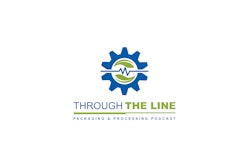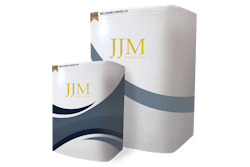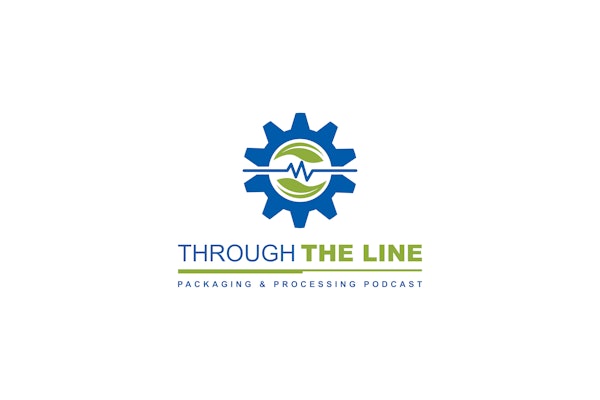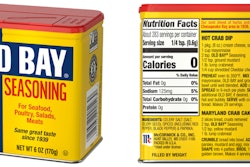
In the heart of Finland, where over 70% of the land is cloaked in forest and where environmental stewardship is embedded in the national ethos, a heritage brand is charting a sustainable path forward. Kouvolan Lakritsi, a family-run confectionery known for its traditionally cooked licorice, has partnered with Metsä Board to unveil a new recyclable and reclosable paper cup—a packaging innovation that embodies regenerative forestry, circular economy thinking, and co-creation at scale.
A collaborative design journey begins
Since 2022, Kouvolan Lakritsi had been considering adding a new packaging format. While the pouch format it was using remained cost-effective and familiar, it lacked the premium presence and sustainability narrative the brand wanted to communicate. With growing consumer interest in recyclable, plastic-free formats—and pressure from retailers for lower-impact options—the company began exploring more innovative solutions.
“We had long wanted to offer something that stood out, something that reflected the quality of our licorice and our values,” says Timo Nisula, managing director at Kouvolan Lakritsi.
When the idea of a paper cup came up in a brainstorming session with Metsä Board, it struck a chord. Encouraged by Metsä Board’s culture of open innovation, Kouvolan Lakritsi joined forces with the company’s Packaging Services team. Together, they began a journey at Metsä Board’s Excellence Centre in Äänekoski, Finland, a space purpose-built for material innovation, packaging design, R&D collaboration, and customer feedback integration.
 | Read this related article on another project from Metsä Board: “Gift Box for Skin Care is Lightweight Yet Luxurious” |
“Co-creation is not a buzzword at the Excellence Center,” says Gunilla Nykopp, customer experience manager at Metsä Board. “We work hand-in-hand with brands to understand not just what kind of packaging they need, but why.”
The collaboration culminated in the creation of a paperboard-based cup, sealed with a transparent film and topped with a reclosable lid. The format breaks with convention while addressing both functional and environmental needs.
“Licorice sold in a bag is still a big mass-market product, but with the licorice cup, we can launch something completely new and exciting,” says Santeri Nisula Sheriff, CEO of Kouvolan Lakritsi. “It is a recognizable and surprising packaging solution that allows for many other things compared to a bag.”
Regenerative forestry at work
What sets this package apart is not just its form, but also its forest-first foundation. Metsä Board, part of Metsä Group, sources its wood entirely from sustainably managed Nordic forests—primarily in Finland—where forest cover exceeds 70% of the land. These forests are managed under Metsä’s regenerative forestry model, a strategic approach that aims to not just sustain but improve the condition of natural ecosystems.
Metsä sources primarily native Nordic species, including pine, spruce, birch, and aspen, for its paperboard production. These species are well-suited to the region’s climate and play a critical role in maintaining biodiversity and forest resilience. The selection and rotation of species are planned carefully to ensure long-term productivity and ecological health.
The fiber is supplied by over 90,000 Finnish forest owners who belong to Metsä Group's parent company, Metsäliitto Cooperative, which holds 51% of Metsä Board’s shares. This community-based model ensures that forestry practices are deeply rooted in local stewardship and generational responsibility. The cooperative’s approach combines local knowledge with scientific forestry principles, ensuring that both biodiversity and economic resilience are prioritized.
“Our goal is to leave forests in better shape than we received them,” explains Timo Lehesvirta, leading nature expert for Metsä Group. “That means enhancing biodiversity, preserving habitat, and delivering climate resilience.”
Metsä’s regenerative approach includes specific actions like selective logging, which avoids large-scale clearcuts; retention of standing deadwood and decaying logs to support forest-floor biodiversity; and maintaining habitat corridors that allow species movement. Special attention is given to preserving native species, from trees to fungi to pollinators.
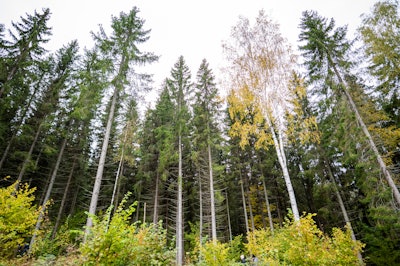 Metsä sources primarily native Nordic species, including pine, spruce, birch, and aspen, for its paperboard production. Image courtesy of Lewis Stiefel.
Metsä sources primarily native Nordic species, including pine, spruce, birch, and aspen, for its paperboard production. Image courtesy of Lewis Stiefel.
“Forests are more than timber,” Lehesvirta adds. “They are carbon sinks, food sources, cultural touchstones. We treat them as such.”
Metsä also monitors ecosystem services including carbon sequestration, clean water, pollination, recreation, and food sources such as berries and mushrooms. These benefits are tracked through impact data and integrated into the group’s long-term forest development models.
“We’re developing what we call nature-positive forestry,” Lehesvirta explains. “It’s about quantifiable improvement, not just compliance.”
These forest practices are also economically viable for forest owners. Forests under Metsä’s management are certified under PEFC (Programme for the Endorsement of Forest Certification) and/or FSC (Forest Stewardship Council) standards, and regenerative methods have been shown to deliver robust long-term yields while maintaining ecosystem function.
According to Metsä Group, the regenerative approach strengthens the value of natural capital alongside the economic value generated by forest products, laying the groundwork for a resilient, climate-adapted packaging supply chain that begins with the forest and ends with the consumer.
Turning trees into sustainable packaging
After the wood is harvested, it is processed at one of Metsä Board’s eight mills—seven in Finland and one in Sweden—where it is transformed into premium folding boxboard. A cornerstone of the company’s bioeconomy strategy, its Äänekoski mill in Finland produces fully coated bleached boxboard for high-performance packaging and graphical applications.
“We make use of every part of the tree,” says Timo Tallinen, VP, Äänekoski board mill. “The best logs go to sawn timber, plywood, and LVL [laminated veneer lumber]. Thinner parts of the tree trunk, treetops, and younger trees from thinnings become pulp. Bark and branches are used for energy. Nothing is wasted.”
Metsä Board’s folding boxboard is built from a three-layer structure: the outer layers are made of chemical pulp, which offers high brightness and excellent printability, while the middle layer consists of high-yield pulp that provides stiffness and bulk with less material. This engineered composition enables weight reduction without sacrificing performance—a critical factor in reducing carbon footprint.
“Our three-layer board structure means we can deliver the same strength and functionality with lower weight,” says Metsä Board VP, climate and circular economy, Maija Pohjakallio. “This translates into less material use, reduced emissions during transport, and better efficiency in printing and converting.”
The board used for the Kouvolan Lakritsi cup is produced at Metsä Board’s Husum mill in Sweden, a facility known for its high standards in quality, food safety, and environmental performance. The Husum mill, like Äänekoski, runs on a high share of renewable energy and is aligned with Metsä Board’s goal to achieve fossil-free production by 2030. It is fully traceable, recyclable, and supports the company’s goal of fossil-free products by 2030.
“Our paperboards are already produced with 90% fossil-free energy,” notes Pohjakallio. “But we’re not stopping there. We’re aiming for fossil-free mills and fossil-free products by 2030.”
Innovation in every dimension
Opened in 2020, Metsä Board’s Excellence Centre in Äänekoski was designed to be more than a testing lab; it’s a hub for packaging innovation, sustainability science, and cross-functional problem-solving. Bringing together packaging designers, R&D specialists, technical consultants, and supply chain experts, the center supported over 400 customer projects in 2023. It features a packaging design studio, a virtual retail environment, digital simulation tools, and a materials lab equipped to analyze performance, recyclability, and product interaction.
It was in this environment of creative collaboration that the Kouvolan Lakritsi cup took shape. Metsä Board’s interdisciplinary team worked hand-in-hand with the licorice brand and its design agency, Futupack, to translate a novel idea into a fully functioning package.
“We analyzed stacking strength, closure integrity, and moisture resistance,” says Iiro Numminen, structural packaging designer for Metsä Board. “The cup had to look good, feel premium, and perform flawlessly from filling to consumption.”
Multiple prototypes were tested across automated and manual packing lines, and the material choice was selected for its balance of sustainability, printability, and food safety.
“During the project, several different prototypes were developed, and a large number of different tests were performed,” confirms Timo Kallio, Metsä Board technical expertise service director. “The new packaging solution seems simple, but the product to be packaged set high demands.
 Metsä Board’s Excellence Centre in Äänekoski, Finland, is two-story, 5,000-sq-ft facility created to allows for joint exploration, innovation, and testing of fiber-based packaging solutions. Image courtesy of Metsä Group.
Metsä Board’s Excellence Centre in Äänekoski, Finland, is two-story, 5,000-sq-ft facility created to allows for joint exploration, innovation, and testing of fiber-based packaging solutions. Image courtesy of Metsä Group.
“We had to learn to understand the packaging lid’s sealability and how the reclosable lid works with the flattened rim of the cup. In addition, we had to learn how to press the resealable lid. In practice, verifying the entire package process required a good deal of time and development.”
The licorice cup was developed on the basis of an existing material and is made from 310 g/m2 Metsä Board Natural FSB [foodservice board] Cup material. The 200-g cup is heat-sealed with a transparent plastic film and is topped by a paperboard lid made by TPLC Oy that fits tightly and supports reclosing. Both the cup and lid have a thin polyethylene coating for barrier and are recyclable through standard paperboard collection streams. The cup is manufactured and digitally printed in Finland by Lansipahvi Oy.
“It’s a food-safe board with excellent sensory properties, perfect for a premium product like Kouvolan Lakritsi,” says Ilkka Harju, packaging services director for Metsä Board.
“We conducted a consumer survey regarding the new packaging solution, and some surprising points of view emerged,” Harju adds. “One was that the consumer appreciated the fact that the packaging did not make a rattling sound and that the new packaging would work better, for example, in cinemas. In addition, the easy reclosability of the package was appreciated.”
Circularity beyond the primary pack
Sustainability considerations extended beyond the cup itself. Metsä Board developed a complete secondary packaging system using white kraft liners and lightweight corrugated structures. These were optimized through palletization simulations to ensure strength and space efficiency.
“The packaging is designed to flow through the supply chain efficiently,” says Marko Leiviskä, packaging development manager at Metsä Board. “From the moment it leaves the factory to the moment it’s placed on a shelf.”
All designs were subject to Metsä Board’s 360 Services, a suite of offerings that includes LCAs, lightweighting analyses, packaging performance simulations, supply chain audits, and technical troubleshooting and guidance.
These services are part of Metsä Board’s value-added model and are available to customers at no extra cost. “We believe innovation should be accessible,” says Nykopp. “It’s how we stay competitive and how our customers succeed.”
A brand with a mission
As the packaging project neared completion, attention shifted to what it would mean for Kouvolan Lakritsi as a brand. For the licorice maker, the new cup represented far more than just a change in materials or structure. It was an opportunity to deepen the emotional connection with customers and signal a long-term commitment to sustainability and innovation.
Known for its authenticity and heritage, Kouvolan Lakritsi has built its reputation on a slow-cooked production method that dates back more than a century. While its methods remain traditional, the company has embraced innovation to meet evolving consumer preferences and growing environmental expectations. The new cup offers a clear opportunity to stand out on shelf while signaling the brand’s commitment to a more sustainable future.
 | Read this related article, “Metsä Board Opens Excellence Centre in Finland” |
Retailers and consumers alike have embraced the new format. The cup offers a tactile, premium user experience, and the design invites reuse. “The new cup can even be reused as a coffee cup that gives a slight flavor of licorice in the coffee,” says Nisula.
The format has also gained attention from export markets looking for sustainable, differentiated packaging that tells a story on shelf. In addition to grocery stores across Finland, the new cup has launched in travel retail, gift shops, and design-forward specialty stores, appealing to both domestic customers and tourists drawn to Scandinavian sustainability. Interest from buyers in Germany, Sweden, and the Netherlands has reinforced the potential for wider European rollout.
A model for the future
The collaboration between Metsä Board and Kouvolan Lakritsi demonstrates how fiber-based packaging solutions can support companies aiming to reduce their environmental impact. By adding a paper-based, recyclable format to its packaging portfolio, Kouvolan Lakritsi is able to reduce packaging weight, use renewable materials, and improve recyclability—all key factors in aligning with EU and global sustainability directives.
Metsä Board’s use of fresh fiber from regenerative Nordic forests, combined with its fossil-free production targets and low-carbon board structure, contributes to a significantly lower carbon footprint compared to conventional plastic-based packaging. The three-layer board design used in the licorice cup helps reduce raw material usage without compromising on strength or print quality.
The development process also highlights the role of collaborative design in meeting packaging performance and sustainability criteria. From structural simulations to transport testing and consumer feedback loops, the project leveraged Metsä Board’s Excellence Centre and 360 Services to create a solution optimized across the entire packaging value chain.
“This is what we mean by sustainable packaging innovation,” concludes Nykopp. “It’s not just about replacing plastic. It’s about redesigning systems, materials, and experiences from the ground up.” PW



